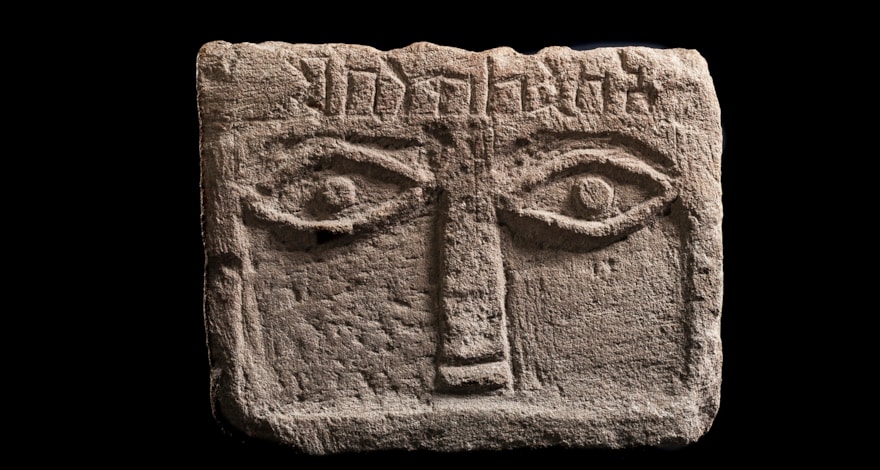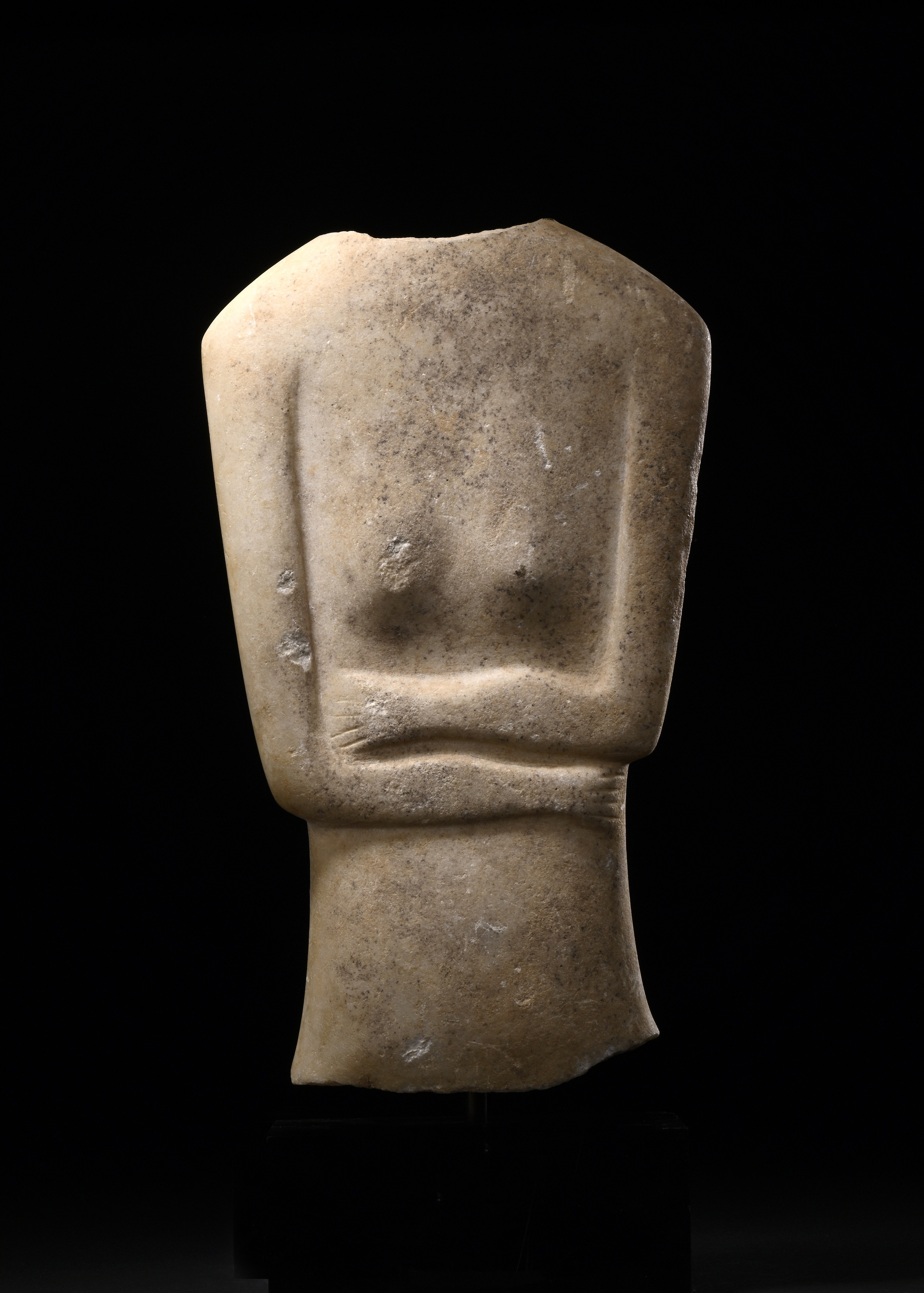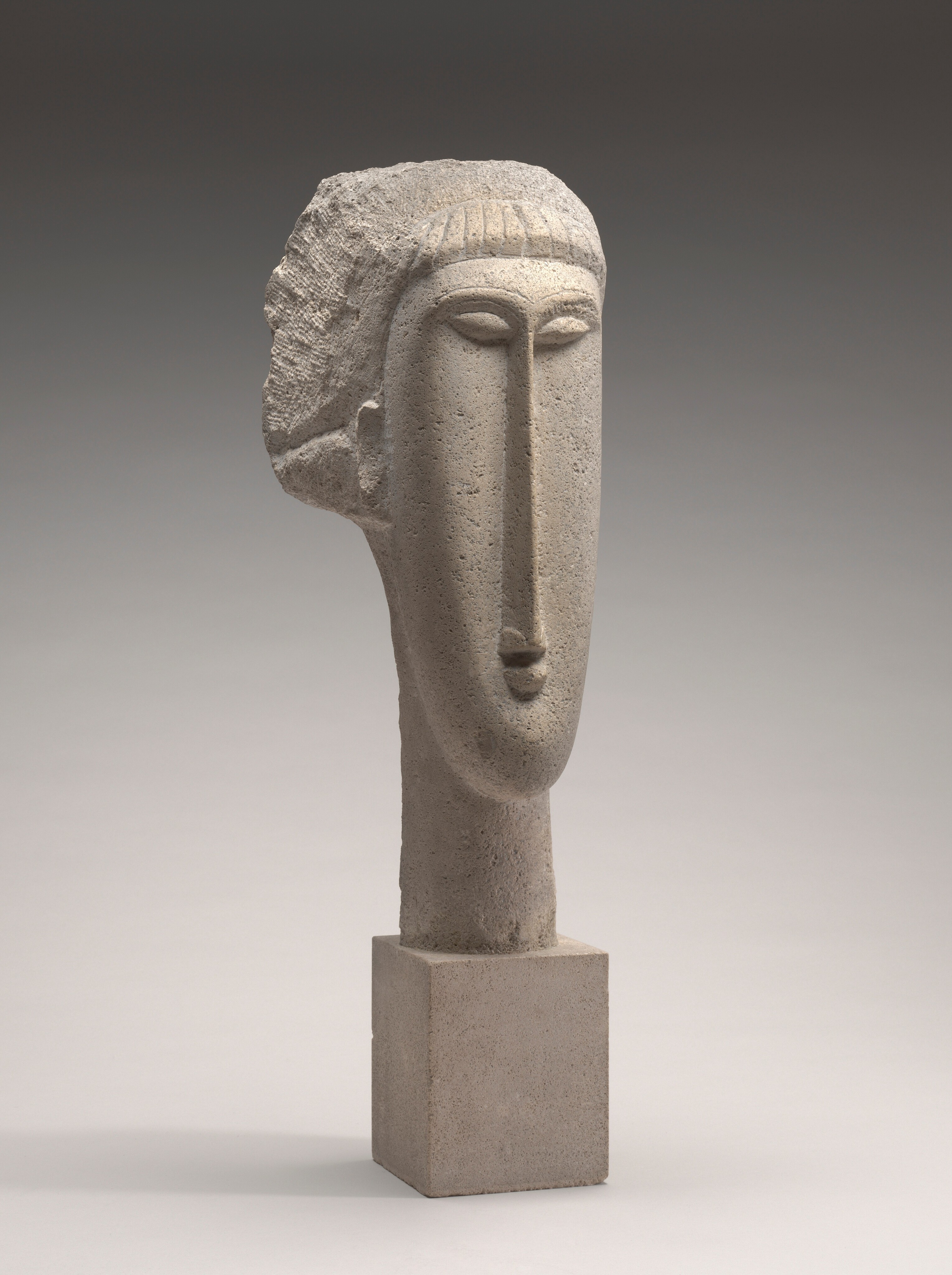Journal
The Artist as Collector: Jacob Epstein
Published 5/8/2025
Amlash Pottery
Published 5/6/2025
Corsican Bronzes: One-Way Track to the Past
Published 5/8/2025
TEFAF NY: A Successful Debut
Published 5/16/2025
Walking with Maple: A Real Triceratops in Mayfair
Published 5/27/2025
Notable Sale: Enigmacursor Joins the Natural History Museum
Published 6/25/2025
The Forgotten Princess
Published 7/18/2025
FRIEZE Masters: 2025
Published 10/21/2025
The Attraction of Abstract Idols
Published 07/05/2025
Read time: 3min

Among the most enigmatic and compelling objects in the field of ancient art are abstract idols: small, stylised human figures, often reduced to the barest essentials of form, yet charged with a cultural, spiritual and aesthetic potency. These portable sculptures, ranging from the minimalist Cycladic figures of the Aegean to the alien-looking Mesopotamian Eye Idols, continue to fascinate not only archaeologists and historians, but also collectors, curators and contemporary artists.

Monumental Cycladic Torso of an Idol, possibly by the Copenhagen Master, 2500-2000 B.C., Bronze Age, Greece, Marble, H: 32 cm. David Aaron Ltd
The enduring appeal of such figures lies partly in their ambiguity. Whether carved in marble, stone or formed from terracotta, these objects resist precise interpretation. It is presumed their purpose was religious or symbolic, but the exact meanings are largely lost. What does remain is an uncanny sense of presence, sharpened by the abstraction. Collectors of Piravend idols from the Caucasus or Amlash figurines from Iron Age Iran are drawn to the same qualities that captivate visitors to major exhibitions: a tension between the deeply ancient and the strikingly modern.
In recent years, museum exhibitions have helped people see the connections between ancient abstract idols from different parts of the world. By displaying figures from places like the Cyclades, Anatolia and Mesopotamia side by side, curators have shown that many early cultures shared a similar approach to representing the human form. The exhibition Idols: The Power of Images, held at the Fondazione Prada in Venice in 2019, assembled over 80 works from major archaeological museums and private collections; the curators traced a visual lineage of abstraction in human representation from the Neolithic period through to the 3rd millennium B.C.
The ‘Gillet’ Piravend Idol, Iron Age II-III, Circa 1000-650 B.C., North-Western Iran, Bronze, H: 22.8cm, W: 14.3cm, David Aaron Ltd
Sir Leonard Woolley’s excavations at Tell Brak in the 1930s yielded hundreds of the so-called Eye Idols: small, flat stone plaques with exaggerated ocular features. These objects, believed to date from the 4th millennium B.C, have no known counterparts in contemporary traditions. Their stark design – geometric, linear and hypnotic – is one of the earliest attestations of abstraction in human form. In modern contexts, they could be mistaken for works by Paul Klee or Jean Arp.
This convergence has not gone unnoticed. The Cycladic figures of the Early Bronze Age Aegean, excavated in the early 20th century, had a formative influence on the European avant-garde. Artists such as Modigliani and Brâncuși drew directly from their smooth, faceless silhouettes. In the 1950s and 60s, major collectors including Stavros Niarchos and Christian Zervos amassed large groups of these works, recognising not only their archaeological value but their aesthetic resonance with post-war modernism.
Interest in such idols has persisted and evolved, collecting these objects often reflects a taste for the timeless: a desire to own works that embody the minimalism of form. Private collectors may acquire an Amlash terracotta idol as an ethnographic curiosity, and also as a sculptural object that could just as easily sit in a contemporary gallery. The art market has responded accordingly, with well-provenanced examples, especially from former major collections such as the Erlenmeyer or Niggeler, commanding strong prices due to their rarity and visual power.
Academic interest, meanwhile, has turned to broader interpretative frameworks. Scholars such as Colin Renfrew have argued for the importance of viewing these figures not in isolation, but within their original ritual and spatial contexts. Ultimately, the appeal of collecting abstract ancient idols rests on a paradox. These are the most silent of artefacts, mute, unknowable, contextually remote, and yet they speak directly to modern sensibilities. Their mystery is not a barrier but an invitation, and their reduction of the human form to its essentials continues to inspire a potent blend of scholarly respect and aesthetic fascination.

Monumental Cycladic Torso of an Idol, possibly by the Copenhagen Master, 2500-2000 B.C., Bronze Age, Greece, Marble, H: 32 cm. David Aaron Ltd
The enduring appeal of such figures lies partly in their ambiguity. Whether carved in marble, stone or formed from terracotta, these objects resist precise interpretation. It is presumed their purpose was religious or symbolic, but the exact meanings are largely lost. What does remain is an uncanny sense of presence, sharpened by the abstraction. Collectors of Piravend idols from the Caucasus or Amlash figurines from Iron Age Iran are drawn to the same qualities that captivate visitors to major exhibitions: a tension between the deeply ancient and the strikingly modern.
In recent years, museum exhibitions have helped people see the connections between ancient abstract idols from different parts of the world. By displaying figures from places like the Cyclades, Anatolia and Mesopotamia side by side, curators have shown that many early cultures shared a similar approach to representing the human form. The exhibition Idols: The Power of Images, held at the Fondazione Prada in Venice in 2019, assembled over 80 works from major archaeological museums and private collections; the curators traced a visual lineage of abstraction in human representation from the Neolithic period through to the 3rd millennium B.C.

The ‘Gillet’ Piravend Idol, Iron Age II-III, Circa 1000-650 B.C., North-Western Iran, Bronze, H: 22.8cm, W: 14.3cm, David Aaron Ltd
Sir Leonard Woolley’s excavations at Tell Brak in the 1930s yielded hundreds of the so-called Eye Idols: small, flat stone plaques with exaggerated ocular features. These objects, believed to date from the 4th millennium B.C, have no known counterparts in contemporary traditions. Their stark design – geometric, linear and hypnotic – is one of the earliest attestations of abstraction in human form. In modern contexts, they could be mistaken for works by Paul Klee or Jean Arp.
This convergence has not gone unnoticed. The Cycladic figures of the Early Bronze Age Aegean, excavated in the early 20th century, had a formative influence on the European avant-garde. Artists such as Modigliani and Brâncuși drew directly from their smooth, faceless silhouettes. In the 1950s and 60s, major collectors including Stavros Niarchos and Christian Zervos amassed large groups of these works, recognising not only their archaeological value but their aesthetic resonance with post-war modernism.
Interest in such idols has persisted and evolved, collecting these objects often reflects a taste for the timeless: a desire to own works that embody the minimalism of form. Private collectors may acquire an Amlash terracotta idol as an ethnographic curiosity, and also as a sculptural object that could just as easily sit in a contemporary gallery. The art market has responded accordingly, with well-provenanced examples, especially from former major collections such as the Erlenmeyer or Niggeler, commanding strong prices due to their rarity and visual power.
Academic interest, meanwhile, has turned to broader interpretative frameworks. Scholars such as Colin Renfrew have argued for the importance of viewing these figures not in isolation, but within their original ritual and spatial contexts. Ultimately, the appeal of collecting abstract ancient idols rests on a paradox. These are the most silent of artefacts, mute, unknowable, contextually remote, and yet they speak directly to modern sensibilities. Their mystery is not a barrier but an invitation, and their reduction of the human form to its essentials continues to inspire a potent blend of scholarly respect and aesthetic fascination.










